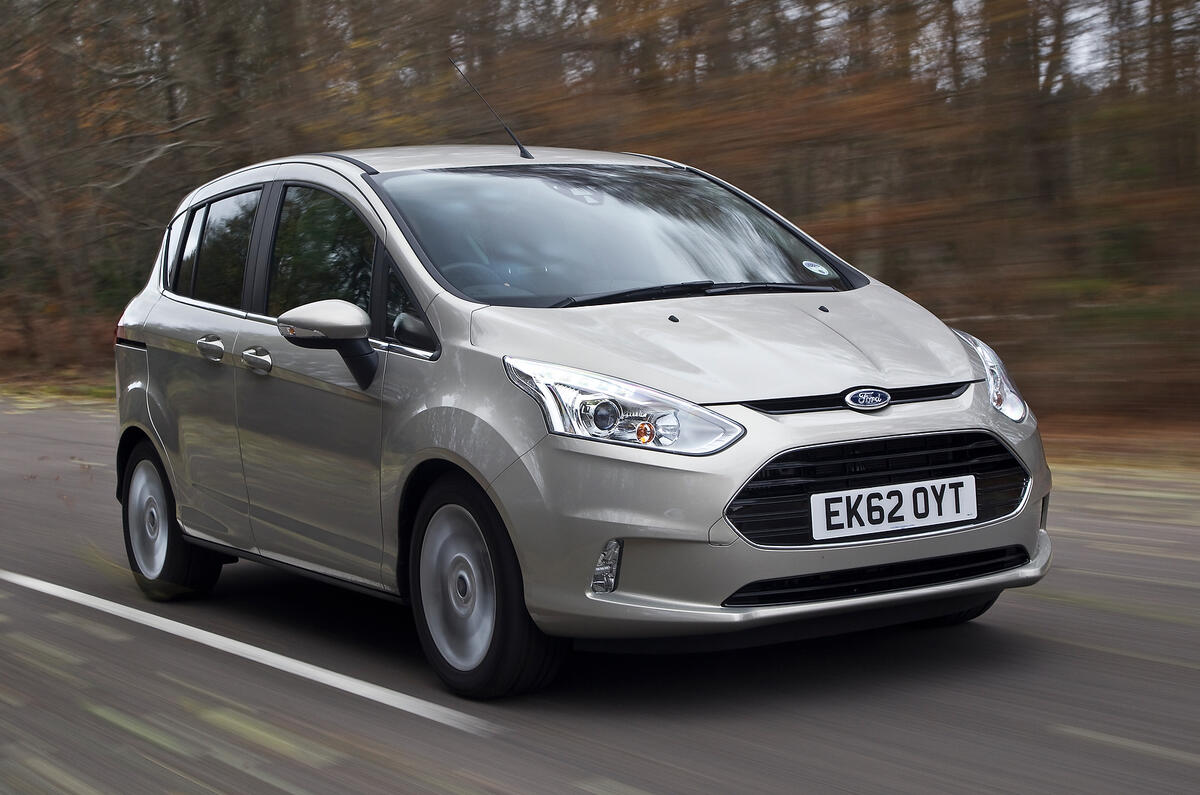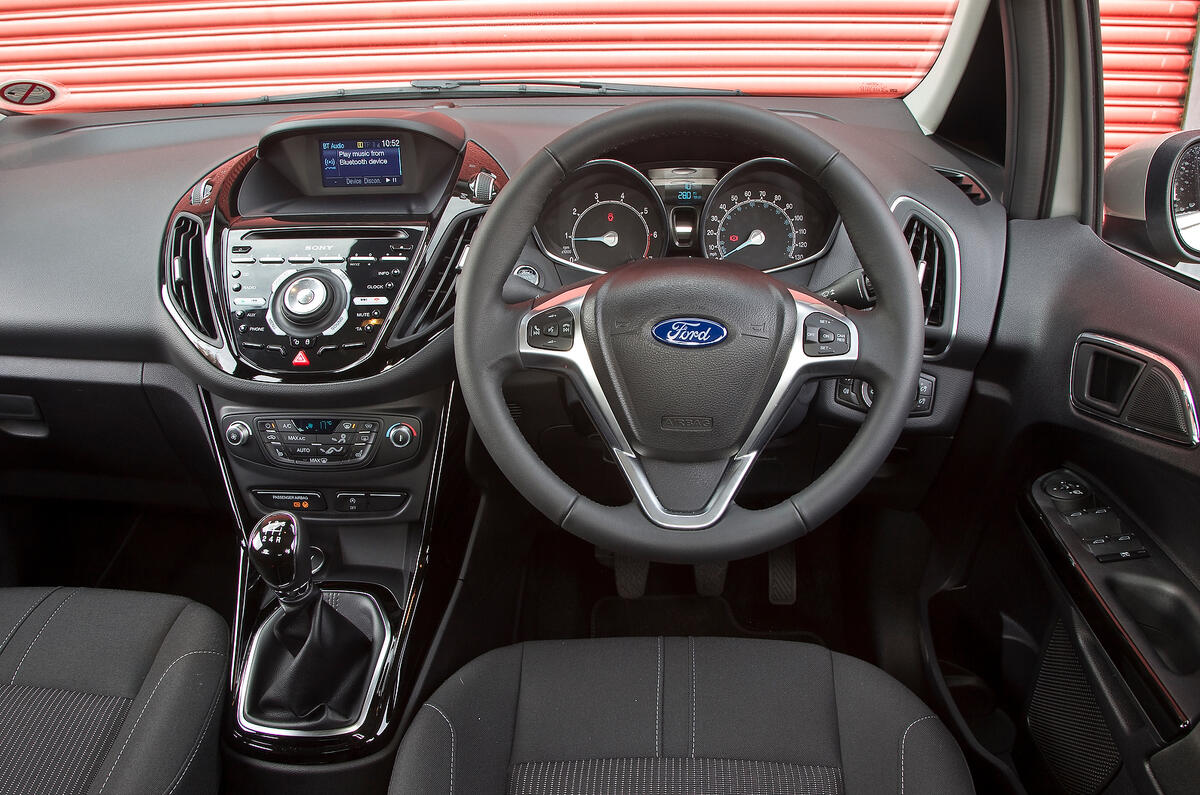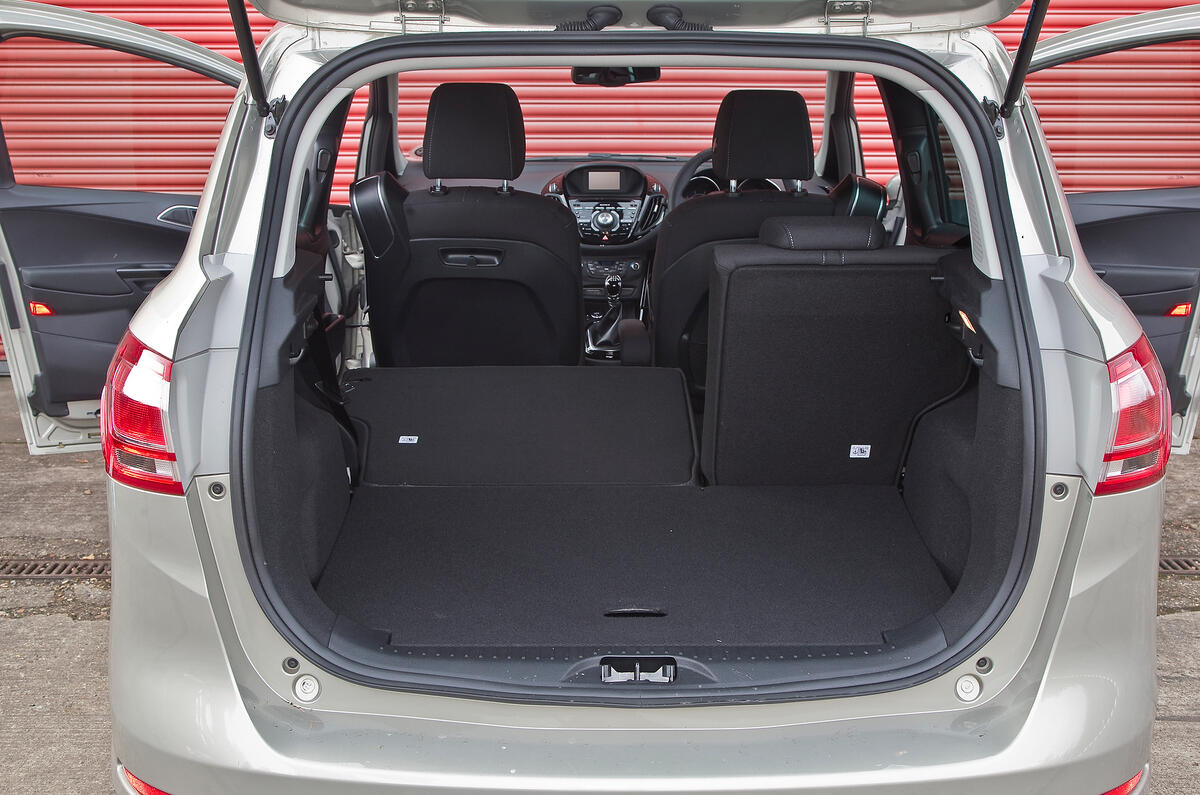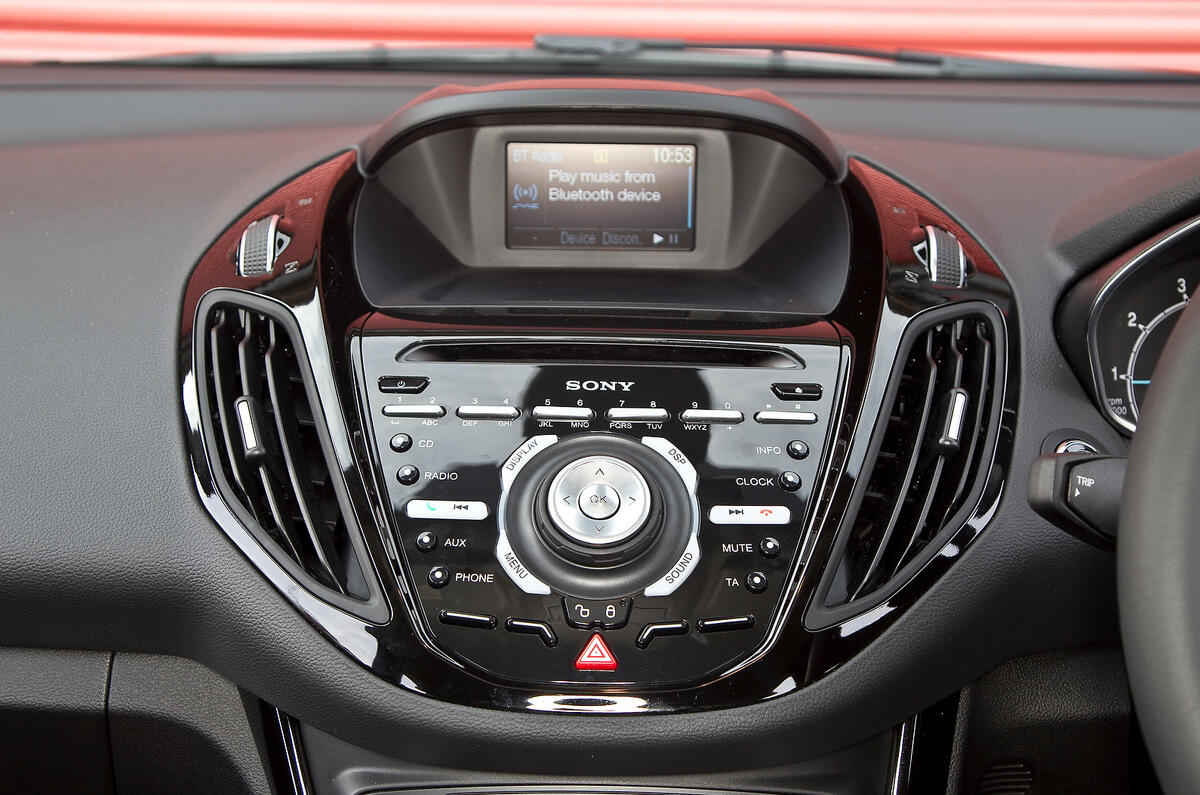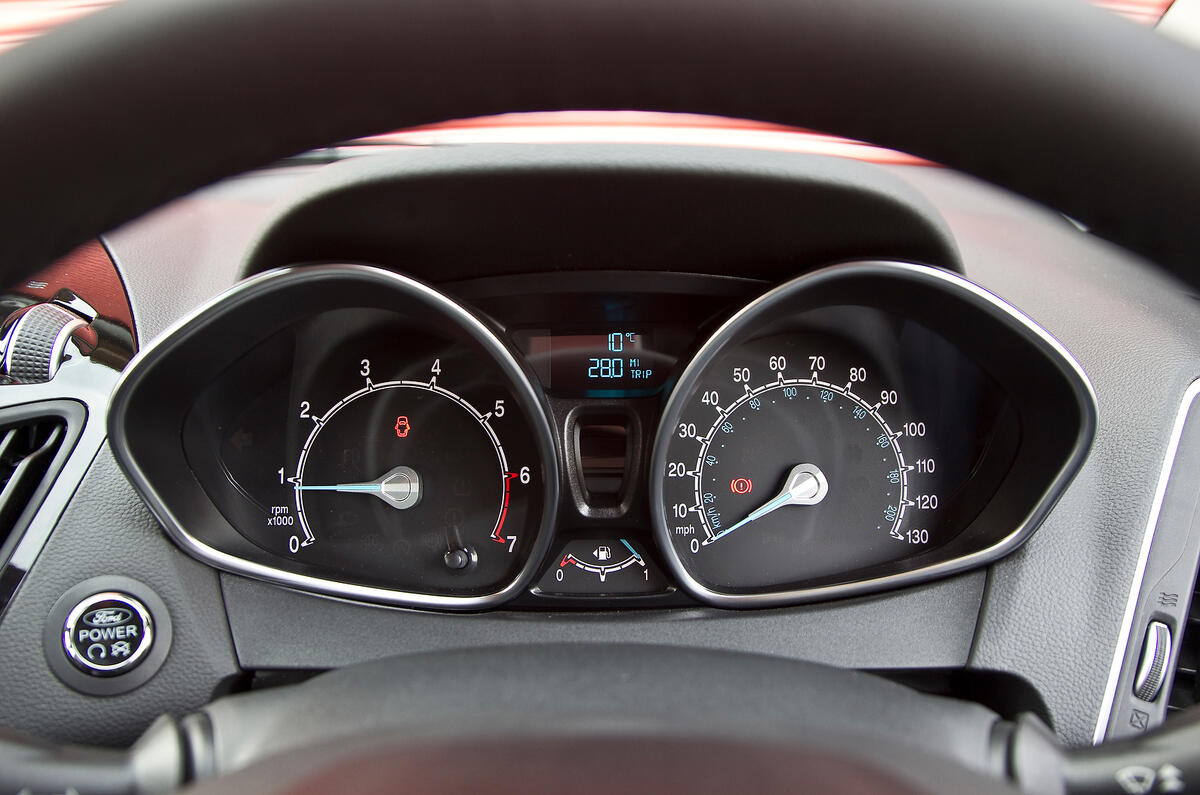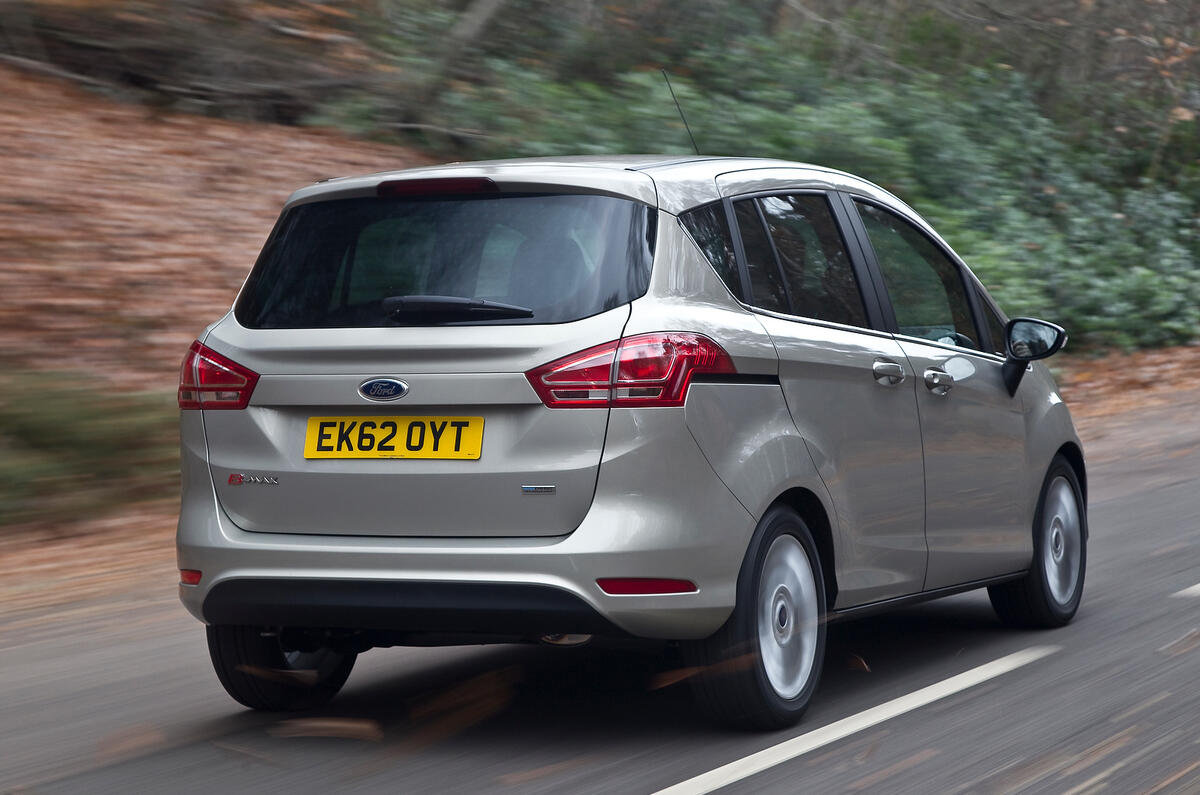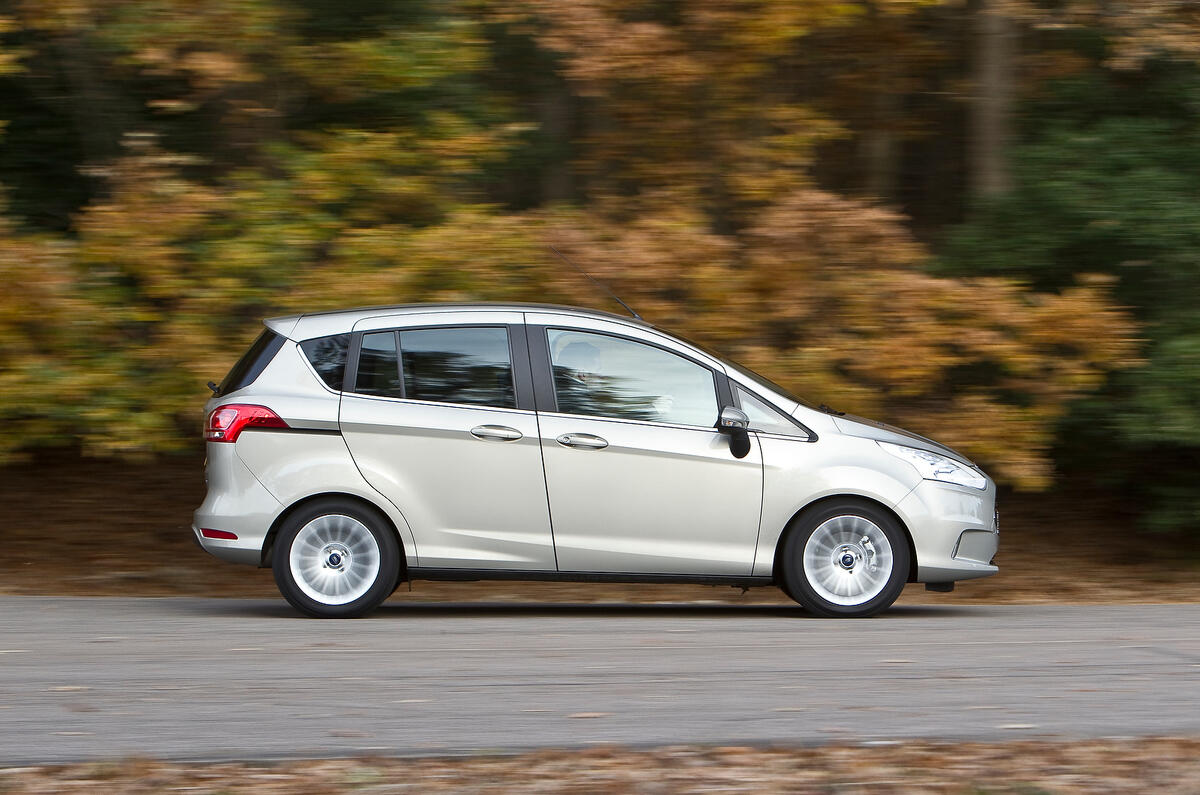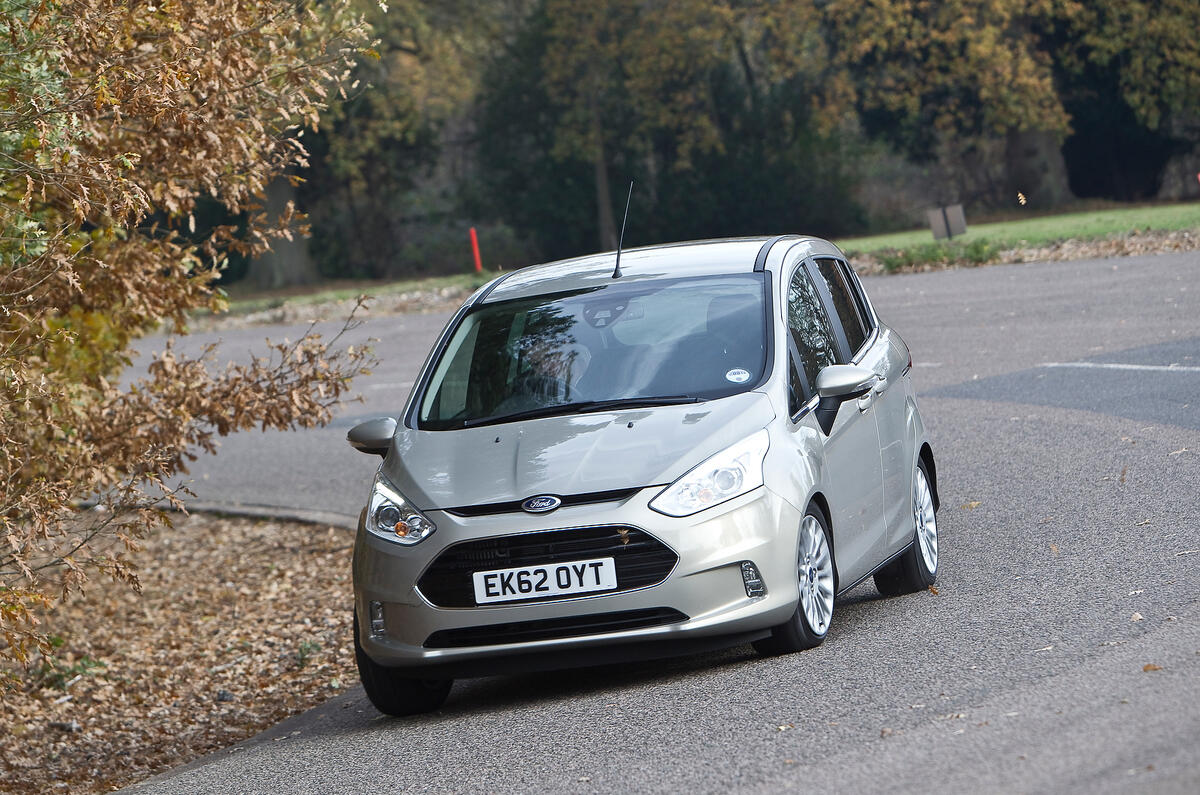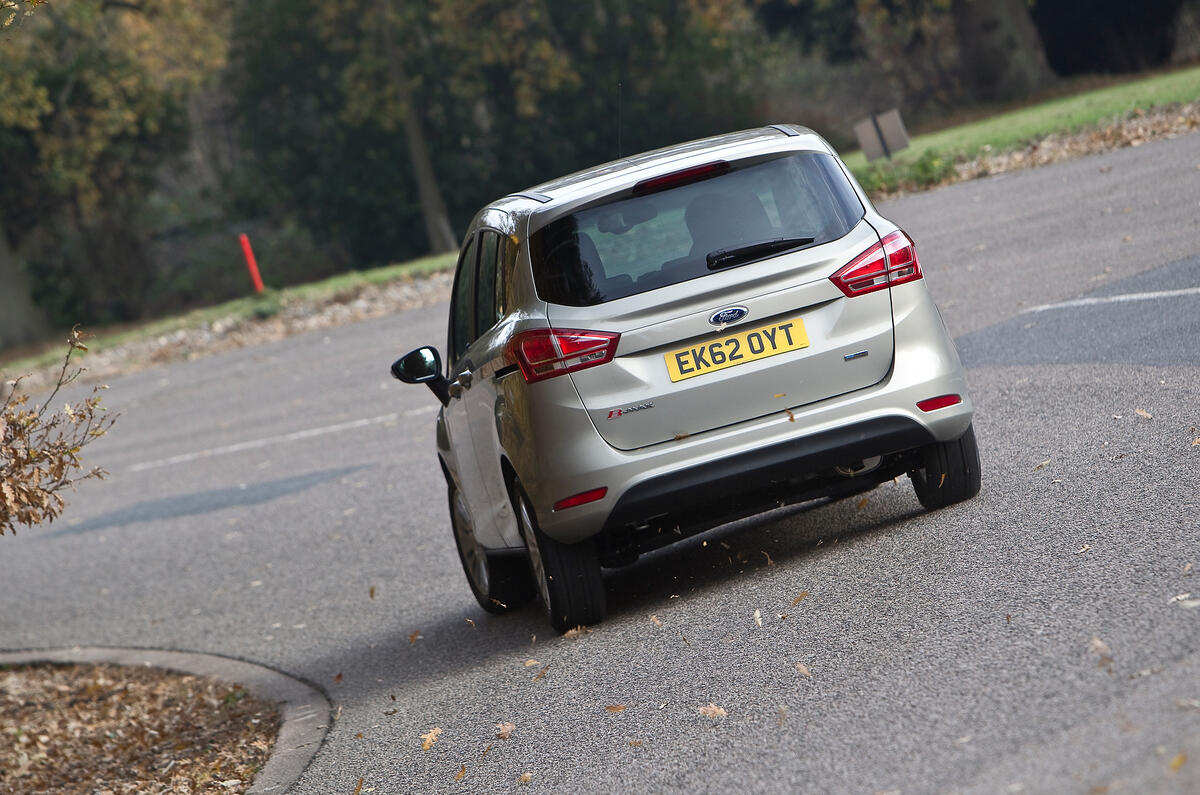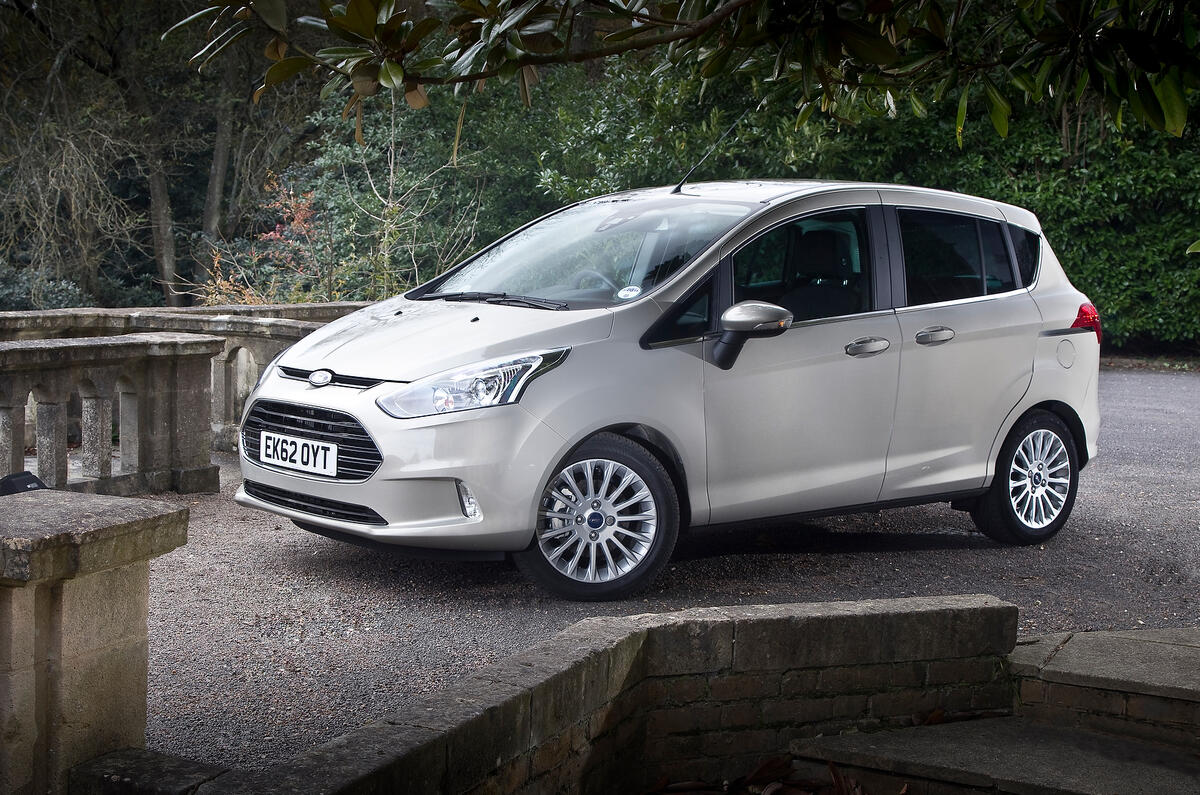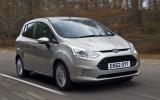The class bar isn’t set high for this particular section. The closest thing we’ve seen to a dynamically satisfying high-rise supermini, over the past decade, is probably the original Nissan Note – a car that pulls ahead of a crowd of comfortable but undistinguished small monocabs only by a neck.
The B-Max puts a good length between itself and the next best rival. True to form, it is to a C3 Picasso exactly what an Ford S-Max is to a C4 Grand Picasso: more controlled, more responsive, more grippy and more involving. And marginally less comfortable-riding now and again, over certain kinds of changing surface taken at low speed.
In isolation, you might wonder if such a practical car ought to strike that kind of dynamic compromise, but you won’t after first-hand experience. Because it isn’t just a question of sporting tastes being satisfied here; the B-Max also feels more mature and more meticulously fine-tuned than the competition. It steers with a weight that builds steadily and allows you tactile interaction with the road via the front contact patches. Its roll rate is consistent, controlled and reassuring.
The brake pedal has excellent feedback and is instinctive to modulate precisely. There’s understeer in the handling mix, just as there should be for stability’s sake in a car this high-sided. But there’s biddable agility and a little verve, too.
And at least as often as you’ll wonder if that bump you just felt would have been quite as obvious in a Meriva or a Mazda 5, you’ll be delighted by the tautness of the B-Max’s primary ride and its capacity to retain a level equilibrium even at most un-MPV-like back-road speeds.



